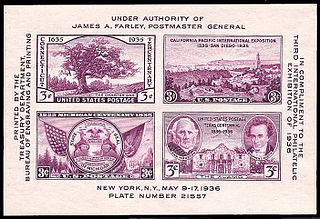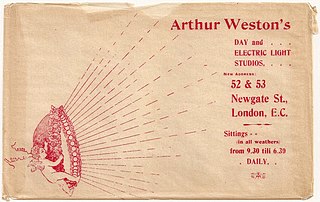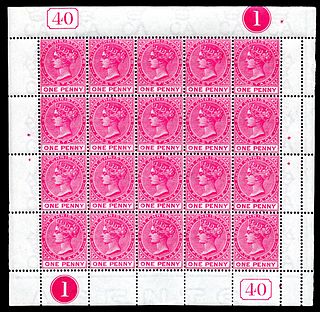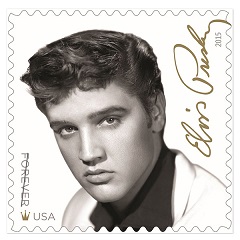
Philately is the study of postage stamps and postal history. It also refers to the collection and appreciation of stamps and other philatelic products. Philately involves more than just stamp collecting or the study of postage; it is possible to be a philatelist without owning any stamps. For instance, the stamps being studied may be very rare or reside only in museums.

A postage stamp is a small piece of paper issued by a post office, postal administration, or other authorized vendors to customers who pay postage. Then the stamp is affixed to the face or address-side of any item of mail—an envelope or other postal cover —which they wish to send. The item is then processed by the postal system, where a postmark or cancellation mark—in modern usage indicating date and point of origin of mailing—is applied to the stamp and its left and right sides to prevent its reuse. Next the item is delivered to its addressee.

Stamp collecting is the collecting of postage stamps and related objects. It is an area of philately, which is the study of stamps. It has been one of the world's most popular hobbies since the late nineteenth century with the rapid growth of the postal service, as a never-ending stream of new stamps was produced by countries that sought to advertise their distinctiveness through their stamps.

For postage stamps, separation is the means by which individual stamps are made easily detachable from each other.

Postal history is the study of postal systems and how they operate and, or, the study of the use of postage stamps and covers and associated postal artifacts illustrating historical episodes in the development of postal systems. The term is attributed to Robson Lowe, a professional philatelist, stamp dealer and stamp auctioneer, who made the first organised study of the subject in the 1930s and described philatelists as "students of science", but postal historians as "students of humanity". More precisely, philatelists describe postal history as the study of rates, routes, markings, and means.
Linn's Stamp News is an American weekly magazine for stamp collectors. It is published by Amos Media Co., which also publishes the Scott Standard Postage Stamp Catalogue, the Scott Specialized Catalogue of United States Stamps and Covers, and the Scott Classic Specialized Catalogue of Stamps and Covers 1840–1940. Linn's was founded in 1928 by George W. Linn as Linn's Weekly Stamp News.
This is a list of philatelic topics.

A postage stamp booklet is a booklet made up of one or more small panes of postage stamps in a cardboard cover. Booklets are often made from sheets especially printed for this purpose, with a narrow selvage at one side of the booklet pane for binding. From the cutting, the panes are usually imperforate on the edges of the booklet. Smaller and easier to handle than a whole sheet of stamps, in many countries booklets have become a favored way to purchase stamps.

In philately, the term cover pertains to the outside of an envelope or package with an address, typically with postage stamps that have been cancelled and is a term generally used among stamp and postal history collectors. The term does not include the contents of the letter or package, although they may add interest to the item if still present. Cover collecting plays an important role in postal history as many covers bear stamps, postmarks and other markings along with names and addresses all of which help to place a cover at a given time and place in history.

A plate block is a block of stamps from the edge of the sheet which shows the plate or cylinder from which the stamps were printed.

Stamp albums are books used to house a collection of postage stamps.

A souvenir sheet or miniature sheet is a postage stamp or a small group of postage stamps still attached to the sheet on which they were printed. They may be either regular issues that just happen to be printed in small groups, or special issues often commemorating some event, such as a national anniversary, philatelic exhibition, or government program. The number of stamps ranges from one to about 25; larger sheets of stamps are simply called "sheets" with no qualifier.

The Machin series of postage stamps is the main definitive stamp series in the United Kingdom, used since 5 June 1967. It is the second series to figure the image of Elizabeth II, replacing the Wilding series. The last issue was on 4 April 2022, four months before her death on 8 September.

The postage stamps of Ireland are issued by the postal operator of the independent Irish state. Ireland was part of the United Kingdom of Great Britain and Ireland when the world's first postage stamps were issued in 1840. These stamps, and all subsequent British issues, were used in Ireland until the new Irish Government assumed power in 1922. Beginning on 17 February 1922, existing British stamps were overprinted with Irish text to provide some definitives until separate Irish issues became available. Following the overprints, a regular series of definitive stamps was produced by the new Department of Posts and Telegraphs, using domestic designs. These definitives were issued on 6 December 1922; the first was a 2d stamp, depicting a map of Ireland. Since then new images, and additional values as needed, have produced nine definitive series of different designs.

Glassine is a smooth and glossy paper that is air, water, and grease resistant. It is usually available in densities between 50–90 g/m2 (0.010–0.018 lb/sq ft). It is translucent unless dyes are added to color it or make it opaque. It is manufactured by supercalendering: after pressing and drying, the paper web is passed through a stack of alternating steel- and fiber-covered rolls called a supercalender at the end of the paper machine so that the paper fibers flatten facing in the same direction.

A sheet of stamps or press sheet is a unit of stamps as printed, usually on large sheets of paper based on the size of the printing plate, that are separated into panes that are sold at post offices. Where more than one pane is on a printed sheet they are arranged in a table-like arrangement. The spaces between the single stamps are all of the same size and provide space for a cut or perforation.
George Ward Linn, of Ohio, was a philatelist who published philatelic literature extensively and was the founder of Linn's Weekly Stamp News in 1928, the philatelic journal for which he is most famous.

Postage stamp paper is the foundation or substrate of the postage stamp to which the ink for the stamp's design is applied to one side and the adhesive is applied to the other. The paper is not only the foundation of the stamp but it has also been incorporated into the stamp's design, has provided security against fraud and has aided in the automation of the postal delivery system.

In philately a wrapper is a form of postal stationery which pays the cost of the delivery of a newspaper or a periodical. The wrapper is a sheet of paper, large enough to wrap around a folded or rolled newspaper and with an imprinted stamp to pay the cost of postage. Some catalogs and reference books refer to a wrapper as postal bands which comes from the French term bandes postale. Still others refer to it as a newspaper wrapper or periodical wrapper.

The Elvis Presley Forever postage stamp is a part of the Music Icons series issued by the United States Postal Service. It features Presley in a 1955 black and white photograph taken by William Speer. The design created by Antonio Alcalá and Leslie Badani also features a golden crown and the signature of Presley on the side.






















